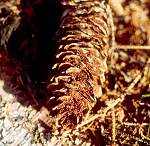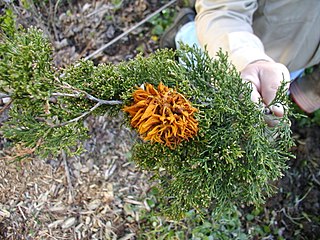
Gymnosporangium is a genus of heteroecious plant-pathogenic fungi which alternately infect members of the family Cupressaceae, primarily species in the genus Juniperus (junipers), and members of the family Rosaceae in the subfamily Amygdaloideae. The common name cedar-apple rusts has been used for these fungi. According to the Dictionary of the Fungi, there was 57 species in the genus. In 2023, Species Fungorum lists up to 74 species.

Venturia is a genus of fungi in the family Venturiaceae. First identified in 1882, species in the genus are plant pathogens. Venturia is widespread and the genus contains an estimated 58 species, or 130 species. Anamorphs were historically represented in the genus Fusicladium.
Scopinella is a genus of fungi in the Coronophorales order. The relationship of this taxon to other taxa within the order was unknown, It has been placed into the family of Ceratostomataceae.
Vladimir Andreevich Tranzschel was a botanist, mycologist and plant pathologist, especially an expert on rust fungi. He lived in the Russian Empire and then in the Soviet Union.
The Uleiellaceae are a family of smut fungi in the order Ustilaginomycetes. The family contains the single genus Uleiella, which has two species.
Maravalia is a genus of rust fungi in the Chaconiaceae family. The widespread genus contains about 35 species that grow on angiosperms.

Chrysomyxa is a genus of rust fungi in the family Coleosporiaceae. The genus, widespread in the Northern Hemisphere, contains about 23 species. Rust fungi in the genus Chrysomyxa occur in boreal forests of the northern hemisphere on Pinaceae,, and most species alternate to angiosperm hosts in the Ericaceae.
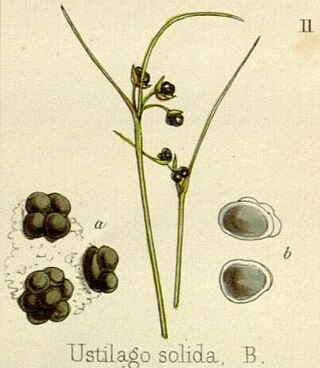
Cintractia is a genus of fungi belonging to the family Anthracoideaceae. It was first described by Marie Maxime Cornu in 1883.
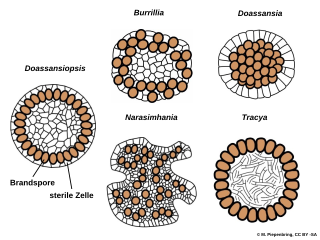
Doassansiopsis is a genus of smut fungi belonging to the monotypic family DoassansiopsidaceaeBegerow, R.Bauer & Oberw., 1998, within the class Ustilaginomycetes and order Urocystidales.
Pucciniosira is a genus of rust fungi belonging to the family Pucciniosiraceae.
Uredo is a genus of rust fungi: long considered incertae sedis in the order Pucciniales, but now placed in the family Pucciniaceae. This long-established genus, together with the closely-related Uromyces, give their names to "uredo-type" fungal spore structures such as "urediniospore" and uredinium".
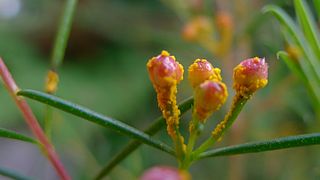
The Sphaerophragmiaceae are a family of rust fungus genera in the order Pucciniales, based on the type genus Sphaerophragmium and placed in the suborder Uredinineae.
